I would like to receive top 5 selling products in quantity in an order from NorthWind database.
The database has a bunch of tables like Order, OrderDetails, Customers, etc. I was suggested to use Orders Details table below:

Now, I tried the following:
WITH cte AS (
SELECT
OrderID,
Quantity,
ProductID,
ROW_NUMBER() OVER(PARTITION BY OrderID ORDER BY OrderID) as row_num
FROM [Order Details]
)
SELECT *
FROM cte
WHERE row_num IN (SELECT row_num FROM cte WHERE row_num <=10)
ORDER BY OrderID;
Thought this retrieves 10 rows now for each order, they are not ordered based on sold quantities and top sold products are not retrieved properly as for some orders the top sold was beyond the first top 10 rows based on row number I got with ROW_NUMBER() function in SQL.
Edit: For example, if I have 10 orders each with 20 products, then I want top 5 each each product, so the result table should have 50 rows total.
